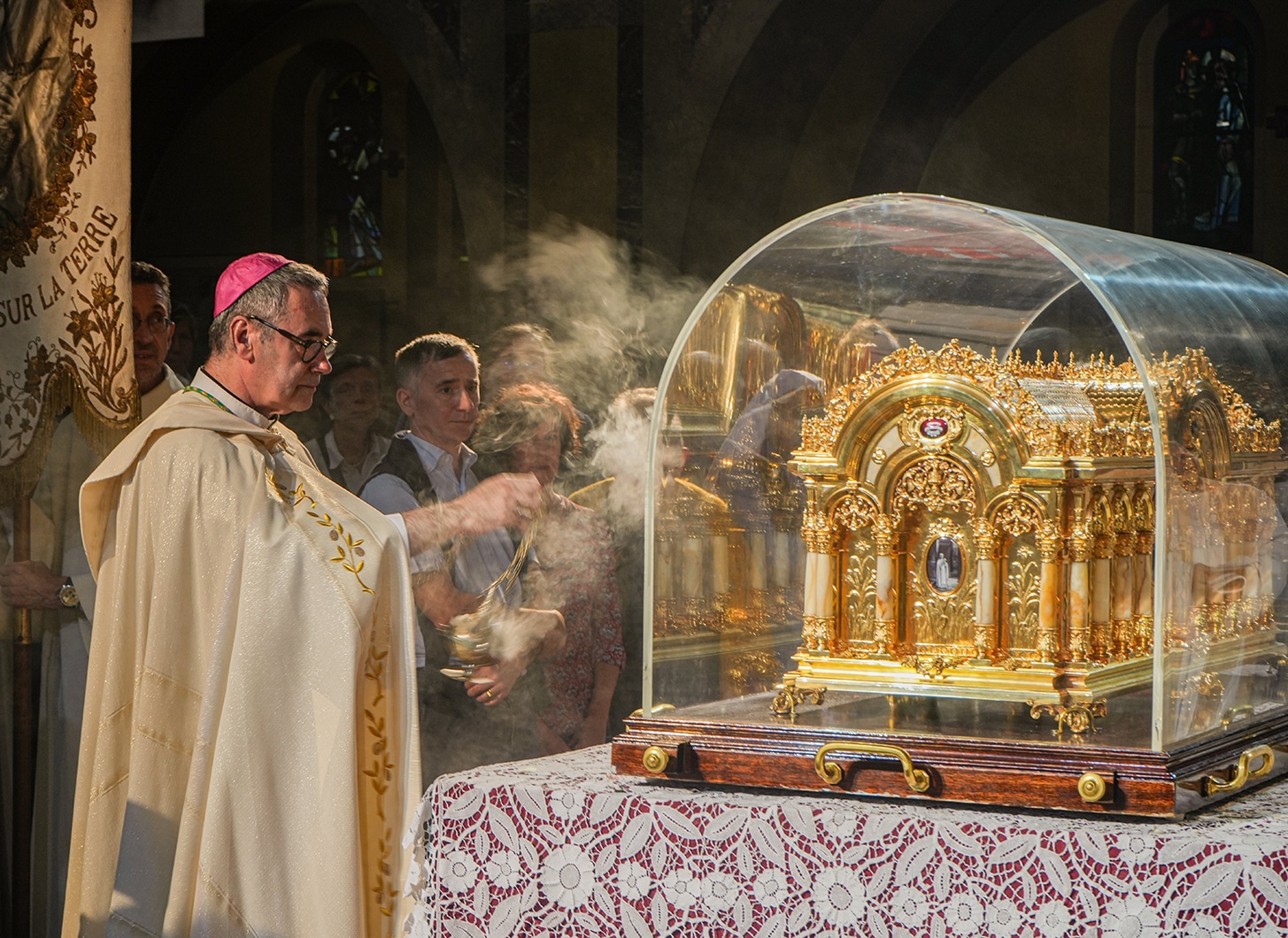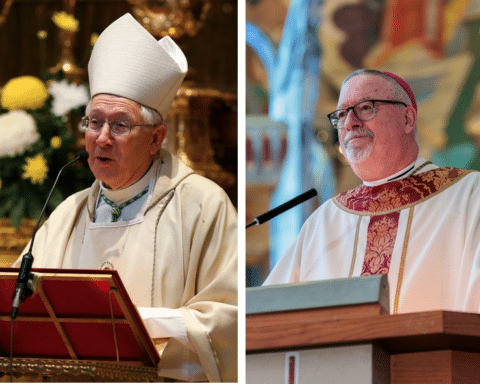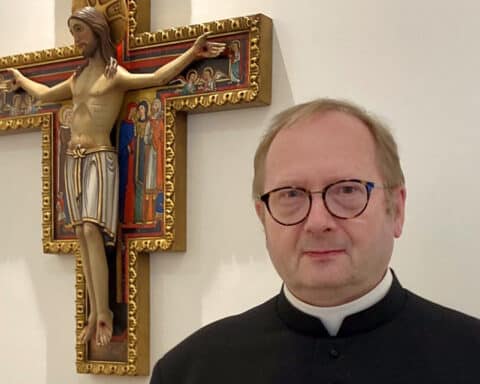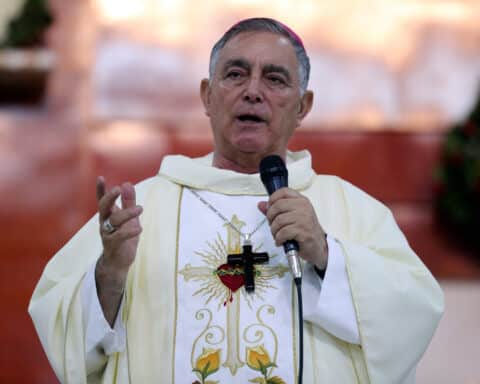PARIS (OSV News) — Nearly 30,000 pilgrims flocked to Lisieux for the so-called Theresian feasts, celebrated Sept. 30-Oct. 8 in France’s northern Normandy region, where the famous French saint, born Jan. 2, 1873, lived and died.
Pilgrim groups were pouring in from all over the world to Lisieux — including pilgrims from the United States, Mexico, Brazil, Australia and all over Europe. Not many of them however may know that one of the most devout worshippers of “The Little Flower,” as St. Thérèse is called, was “The Little Sparrow” — the legendary French singer — Édith Piaf.
According to the new rector of the Sanctuary of St. Thérèse of Lisieux, Msgr. Emmanuel Schwab, 9,000 people attended the official opening ceremony Oct. 1, the feast of one of the Catholic Church’s favorite saints. It was “a record attendance,” he said. The Lisieux sanctuary is France’s second-largest pilgrimage site after Lourdes. Over a million people visit it every year.
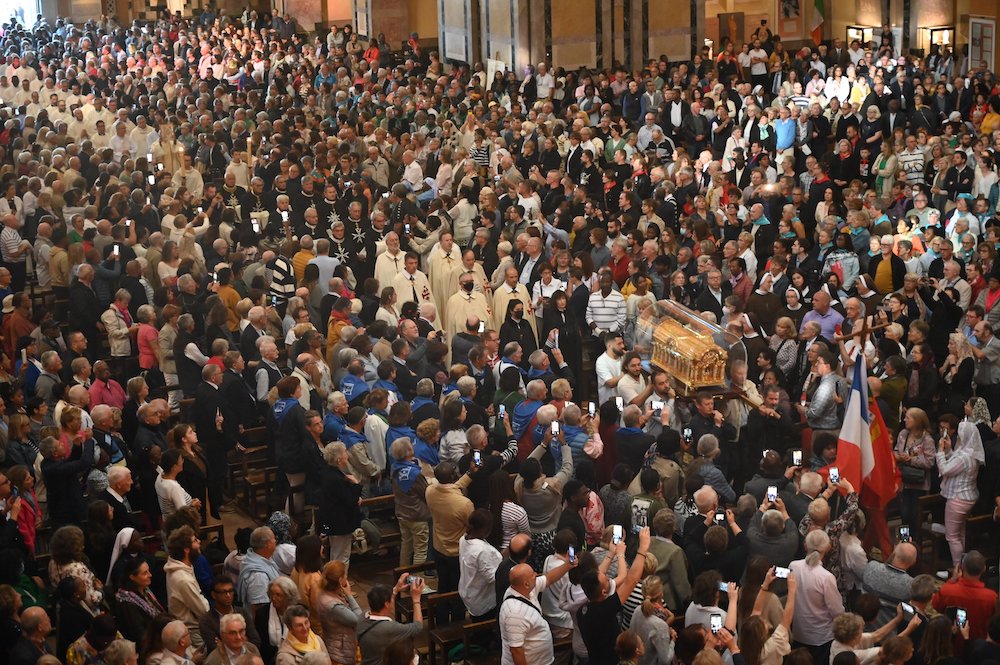
In 2022, foreign pilgrims started to come to Lisieux again, after the COVID-19 pandemic interruption. They arrived en masse in the jubilee year, marking 150 years of since the birth of “The Little Flower” and the 100th anniversary of her beatification.
Procession with St. Thérèse’s relics
On Sept. 30, St. Thérèse’s relics were taken from the Carmel, where she was a cloistered nun, and brought in procession into the Lisieux basilica dedicated to her, and later into the town’s cathedral, where she once prayed with her family.
“The emotion of the pilgrims was palpable,” Msgr. Schwab told OSV News, impressed by their fervor. “There is something about Thérèse that attracts people, something that escapes us.”

For the sanctuary’s rector, this is due to “a kind of ‘democratization’ of the path to holiness that she suggests.” He explained that “many are touched by the idea that every little thing in life can be a pathway to God, no matter how modest, if it is done with love.” “All her life conveyed an absolute trust that Jesus can save anyone,” despite him being rebuffed by people, the rector added.
Pilgrims swarm small town
Such a large number of pilgrims has a strong impact on Lisieux, a town of 20,000 inhabitants. They got used to the fact, however, that she is one of the most recognizable French figures in the world, and for the years 2022-2023 has been chosen as one of the 60 personalities celebrated by UNESCO, the United Nations Educational, Scientific and Cultural Organization, that honors people from around the world who have worked in the fields of peace, education, sciences, social sciences and communication. For the Carmelites, as they wrote on their website, this recognition “opens up new prospects for spreading her message of life, peace and love to the remotest islands, as she used to say, or to the peripheries, according to the expression of Pope Francis.”
St. Thérèse’s life was filled with everyday crosses. She lost her beloved mother, now a saint, Azélie-Marie “Zélie” Martin, when she was only 4 and a half years old, and suffered from anxiety and depression for years after her death. Then her “second mother,” her older sister Pauline, decided to join the Carmelites, which Thérèse thought was another heavy loss. Miraculously cured of her hypersensitivity, she herself joined the Carmelite nuns in 1888. She died 11 years later, in what the doctors described as terrible suffering from tuberculosis, on Sept. 30, 1897.
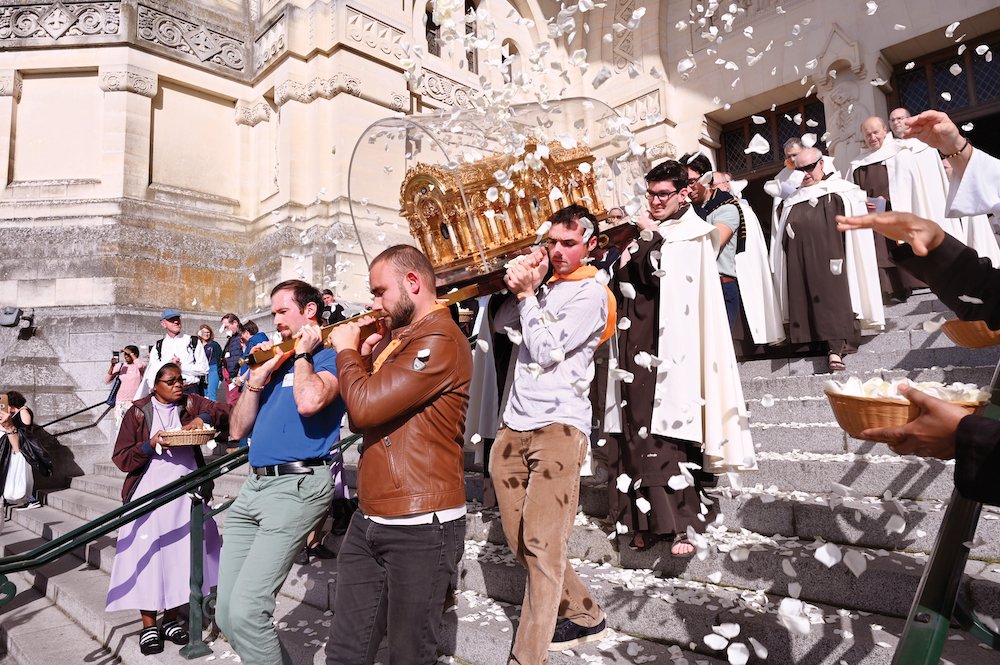
Édith Piaf’s miraculous cure
In an extraordinary path-crossing of two French giants, “The Little Flower” had a big fan in ”The Little Sparrow,” Édith Piaf. “Piaf,” meaning sparrow, was the stage name of the legendary French singer, born Édith Giovanna Gassion in 1915. To this day, hers is the most recognizable French voice in history, known especially for performing “Milord” and “La Vie En Rose.”
When Édith was 5, she was cured of her blindness after visiting St. Thérèse’s grave in Lisieux (three years before the Carmelite’s beatification). As a child brought up by circus performers, she suffered abuse from her alcoholic father who beat her, and in a turn of God’s mercy, it was a woman from the brothel run by Édith’s grandmother who brought little Édith to Lisieux. Throughout her life, Édith, also known for her numerous affairs, remained fervently devoted to St. Thérèse and faithful to her daily prayer, often wearing a cross around her neck with the little black dress she wore for her performances.
Édith was born just 18 miles away from Lisieux, in Bernay, a small town of 10,000 inhabitants, which also celebrates the jubilee of the 60th anniversary of the legendary singer’s death on Oct. 10, 1963.
A French comedian and writer Pierre Fesquet gave a talk in Bernay Oct. 11 on “Édith and the Miracle of Lisieux.” He also is the author of a book focused on Piaf’s spirituality, “A Cry to God.”
“Édith Piaf is mysteriously linked to Thérèse,” Fesquet told OSV News. “At the age of 10, she ran away from her father, a traveling circus performer, and arrived in Lisieux at the time of Thérèse’s canonization. She talked about it later, saying: ‘I saw what true glory was, and that enabled me, later on, not to believe in my own.'”
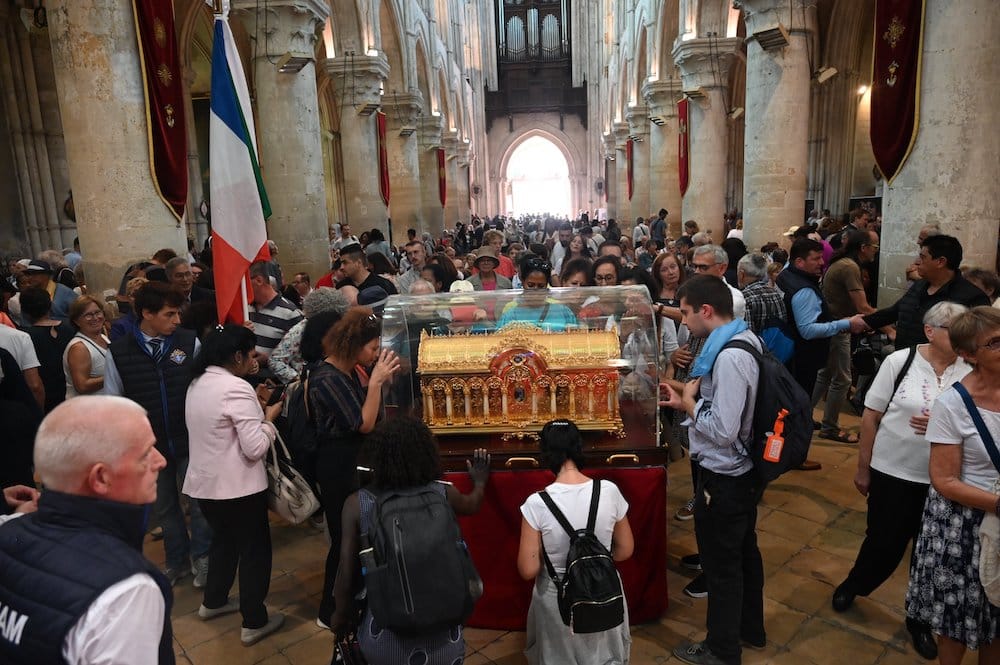
“Édith had unfailing faith just like Thérèse, despite repeated suffering and shattered dreams of love, and she gave herself completely to her faith,” Fesquet added.
The mystery of trust in God
“Hugues Vassal, her photographer, used to quote her saying: ‘The little black dress I wear on stage is like St. Thérèse’s black veil, at once protective and stripping. On stage, I give everything, I keep nothing for myself.'”
“Édith Piaf was a strong character, and she did not mince her words when she wanted to say things,” Fesquet pointed out. “But she was very generous. She often went into churches to pray and she offered large sums of money to parish priests so they could repair the churches. She was also very considerate of the homeless she came across.”
For Fesquet, “Édith Piaf is a kind of illustration of what St. Thérèse said about trusting in God despite one’s faults. She did not have a church funeral when she died, because she was seen as a public sinner, with all her lovers. But when she died, a priest, whom she had unknowingly saved from suicide, stayed to pray beside her bed for three days. She gave a lot of hope to people who felt miserable.”
The town of Bernay will celebrate Piaf until January 2024. On Jan. 7, 2024, Cardinal Marcello Semeraro, prefect of the Dicastery for the Causes of Saints, will come to Lisieux to close the jubilee of St. Thérèse.

